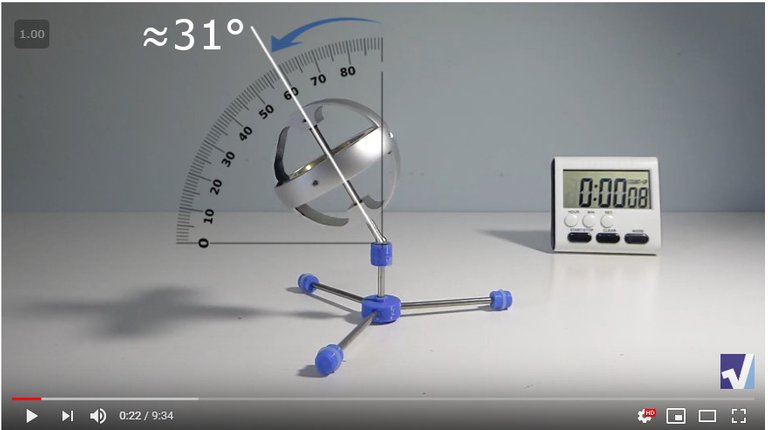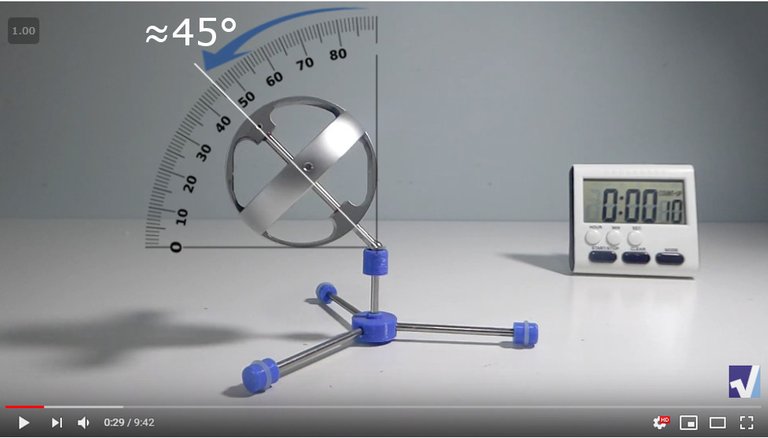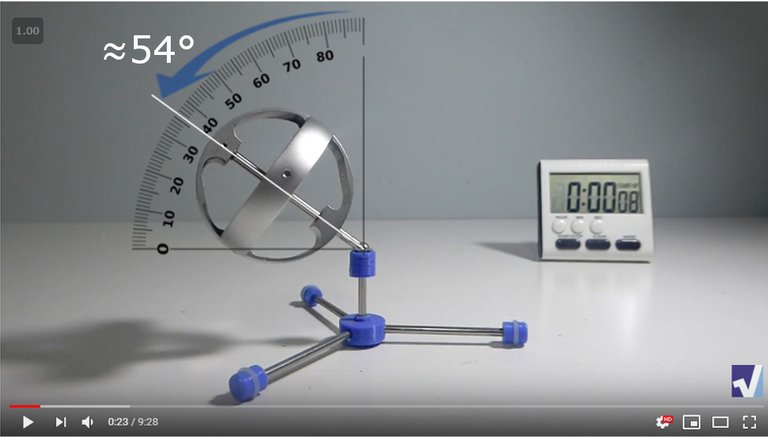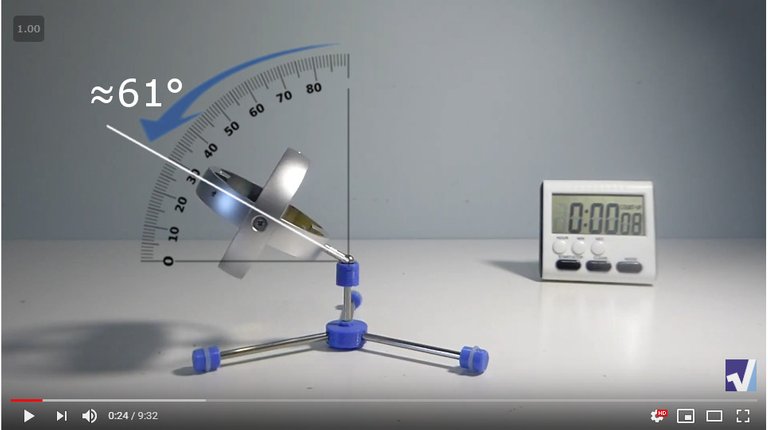🔬#MESExperiments 12: Gyroscopes at Steeper Angles Usually Means Exponentially Longer Rising Times
In #MESExperiments 12 I demonstrate the observation which usually happens when comparing a gyroscope’s rising time with the initial angle at which it is placed; and is that the rising time tends to increase exponentially as the angle is made even steeper. I demonstrate this by comparing the same gyroscope at 4 different angles: 31°, 45°, 54°, and 61°. In each test the gyroscope was spun up with the same power drill and I made sure to compare the gyroscope experiments in which the total time before falling were similar; thus, ensuring that the initial spin speeds as well as the overall gyroscope setup were comparable for each test.

The results of the experiment are tabulated and graphed in the following spreadsheet. The 31° gyro rose in 70 seconds, the 45° in 140 seconds, the 54° in 217, and the 61° in 337 seconds. The resulting automated exponential “Trendline” from Microsoft Excel gives the following exponential equation and which matches the data well.
y = 13.863 e0.0517x
Effectively, increasing the angle by approximately double from 31° to 61° results in nearly 5 times the rising time (337/70 = 4.814 ≈ 5).
https://1drv.ms/x/s!As32ynv0LoaIh-9pOLwowdYSDqPYVA
Retrieved: 24 July 2019
Archive: Not Available


Data Collected of Each Individual Gyroscope Test
Each of the 4 gyroscope tests are shown below with screenshots at key times and links to the original unmerged videos.
31 Degree Angle Test
- 1:13 - 0:03 = 1:10 Rising Time (70 seconds)
- 7:00 - 1:13 = 5:47 Sleeping Time (347 seconds)
- 9:17 - 0:03 = 9:14 Time to Fall (554 seconds)
Retrieved: 24 July 2019
Archive: http://archive.fo/9eyrQ





45 Degree Angle Test
- 2:26 - 0:06 = 2:20 Rising Time (140 seconds)
- 7:24 - 2:26 = 4:58 Sleeping Time (298 seconds)
- 9:19 - 0:06 = 9:13 Time to Fall (553 seconds)
Retrieved: 24 July 2019
Archive: http://archive.fo/z6c3R





54 Degree Angle Test
- 3:40 - 0:03 = 3:37 Rising Time (217 seconds)
- 7:23 - 3:40 = 3:43 Sleep Time (223 seconds)
- 9:10 - 0:03 = 9:07 Time to Fall (547 seconds)
Retrieved: 24 July 2019
Archive: http://archive.fo/l53u0





61 Degree Angle Test
- 5:40 - 0:03 = 5:37 Rising Time (337 seconds)
- 7:30 - 5:40 = 1:50 Sleep Time (110 seconds)
- 9:13 - 0:03 = 9:10 Time to Fall (550 seconds)
Retrieved: 24 July 2019
Archive: http://archive.fo/gUamM





Gyroscope Weight Measurement
Note that this gyroscope is the same one used in #MESExperiments 11 and thus had a weight including the stem of 150.68 grams: https://peakd.com/mesexperiments/@mes/mesexperiments-11-increasing-gyroscope-spin-speed-doesn-t-necessarily-increase-rising-rate
Stay Tuned for #MESExperiments 13…
Watch Video On:
- 3Speak: https://3speak.online/watch?v=mes/xraaxtki
- Odysee: https://odysee.com/@mes:8/mesexperiments-12-gyroscopes-at-steeper:4
- BitChute: https://www.bitchute.com/video/7hTzkFlyEt4B/
- Rumble: https://rumble.com/v1zn9a6-mesexperiments-12-gyroscopes-at-steeper-angles-usually-means-exponentially-.html
- DTube: https://d.tube/#!/v/mes/QmdvXpLBRyHhTeimtec1GVXD1M6rLCM5ZRB1iZ8YERsBFp
- YouTube: https://youtu.be/n3e9mASpRhs
View More Amazing Videos:
- #MESExperiments Video Series: https://peakd.com/experiments/@mes/list
- DRAFT #MESExperiments Video Series: https://mes.fm/experiments-draft
- #MESScience Video Series: https://peakd.com/science/@mes/tutorials
- #AntiGravity Video Series: https://peakd.com/antigravity/@mes/series
- #FreeEnergy Video Series: https://mes.fm/freeenergy-playlist